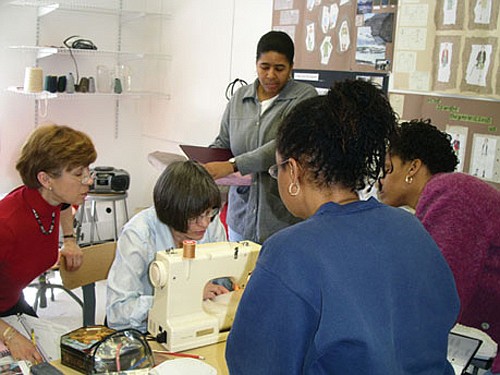YouTube
How to Make COVID-19 Fabric Masks: mass-production at home
Realizing she was able to help relieve Philadelphia’s medical community’s shortage of facemasks during the pandemic, Laurel Hoffmann decided to mass-produce masks in her home-based studio.
The Philadelphia medical community faced a shortfall if N95 masks and other equipment, which state officials requested from FEMA to battle coronavirus. Medical institutions, nursing homes, home health aids, and community workers have also requested thousands of additional masks through their website.
When Hoffmann received an email from Elissa Bloom, head of the Philadelphia Fashion Incubator, stating that they needed volunteers to make masks for the Philadelphia medical community, she immediately volunteered, as she believes it’s a moral obligation to support health workers who were risking their lives.
“If any of us were to become sick, what the health workers are doing far exceeds anything I’m doing, all I’m doing is making some little masks in the safety of my home,” said Hoffmann. “I am steam-rolling these masks out at rapid fire. All that matters is that they function. It takes me 10 minutes or less, total time, to produce one mask including the cutting. I have made nearly 400 masks, and am still counting.” Her speed is possible because she is using the production patternmaking, layouts and other sample making skills she learned when she worked in the Philadelphia clothing factories back in the late sixties. Over the past 20 plus years, she has authored eight college classroom-tested books. They show how to draft and sew high-end clothing using minimal equipment, both for industry and for personal use, in so doing presenting the hands-on information needed to understand the logic that underlies high-end fashion computer technology.
Courtesy Photo
Completed mask made from donated printed fabric.
Anne Millman, the director of the Volunteer Initiative at CoverAid PHL told the Baltimore Times that the organization’s task force is divided into two focus areas; one channel is a manufacturing initiative to bring locally made cloth face masks to health care providers and local governments at cost. The other channel, which Hoffmann has been involved in, is the volunteer effort.
“We had over 200 people sign up to sew masks; our effort has been a great success. CoverAID PHL has the ability to receive donations on our website, we have used those funds to purchase supplies for our volunteers,” said Millman.
One of the most important steps in the project was to develop a cloth mask pattern that is approved by health care providers to meet their immediate needs. The organization objectives were to get the correct quantity of masks to the health care providers who needed them most.
“CoverAID PHL has delivered over 5,000 masks since April 1. We have delivered to MD Anderson Cancer Center @ Cooper; Liberty Lutheran; Bancroft; Nursing Care Services,” said Millman.CoverAID PHL developed a team system; while the team leaders help with communications with the volunteers, and help with all technical sewing questions, the volunteer makers agree to make this specific mask, which is a two layer cloth mask that is used in non-technical areas to preserve the PPE that is in critically short supply.
With the help of volunteers, Millman is able to direct the mask deliveries to the places with the most needs. Yet, all team members are facing a serious challenge of contamination due to the virus. Each member of the team is on shelter in place orders, and cannot come into direct contact with each other.
“We have several volunteer drivers who pick up masks from porches and doorsteps of people’s homes, the masks are then delivered to specific health care providers. We have combined this service with our supply distribution,” said Millman. “One of our volunteers, Angela Edmunds, packs orders of supplies for our makers, These packages are then distributed back to our makers by our volunteer driving network, the ability to deliver supplies to our makers has made a huge difference in our ability to sew quantities of masks.”

